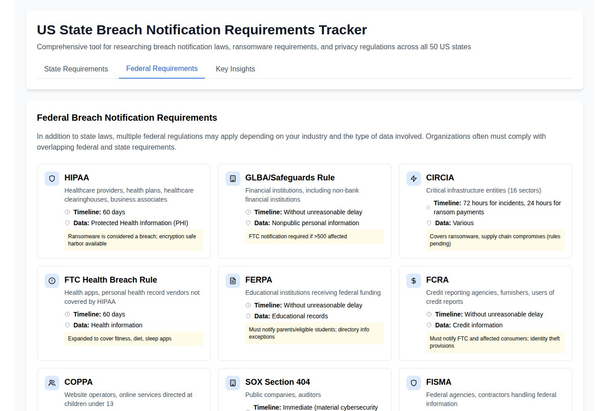Cybersecurity Frontlines: Recent Breaches, Legal Battles, and the Double-Edged Sword of AI

Key Points
- Recent cybersecurity news includes major ransomware breaches and legal actions against spyware firms.
- Research suggests ransomware groups like LockBit are facing significant disruptions, while phishing attacks on cryptocurrency wallets are growing.
- It seems likely that AI and government initiatives are shaping both threats and defenses in cybersecurity.
Recent Developments
The latest cybersecurity news highlights several critical incidents and trends as of May 10, 2025. Ransomware attacks remain a major concern, with the LockBit gang experiencing a significant breach, exposing sensitive data like negotiation messages and user credentials. Legal actions are also prominent, with Meta winning a $168 million lawsuit against spyware firm NSO Group, signaling a pushback against surveillance abuses. Additionally, a large-scale cryptocurrency phishing operation called FreeDrain has been uncovered, targeting digital wallets with sophisticated methods.
AI is increasingly influencing cybersecurity, offering both opportunities for faster threat detection and risks from vulnerabilities in AI-generated code. Governments and corporations are responding with initiatives like the UK's Cyber Resilience Test Facilities and new security tools for small businesses, aiming to bolster defenses against evolving threats.
For more details, check out recent reports on Cybersecurity News and The Hacker News.
Emerging Threats and Responses
Ransomware and phishing attacks continue to evolve, with LockBit's breach potentially weakening such groups, while FreeDrain's scale shows the growing sophistication of financial cyberattacks. Microsoft has patched critical vulnerabilities in cloud services, urging organizations to update systems promptly. Meanwhile, AI's role is debated, with experts highlighting both its potential to enhance security and the risks of shadow AI use.
Government efforts, like CISA's advisories and the UK's new programs, aim to strengthen infrastructure security, while corporate innovations like HPE's Secure Gateway offer tailored solutions for small businesses. These developments reflect a dynamic landscape where threats and defenses are constantly adapting.
Survey Note: Comprehensive Analysis of Recent Cybersecurity Developments
As of 01:38 PM EDT on Saturday, May 10, 2025, the cybersecurity landscape is marked by significant incidents, legal milestones, and evolving threats, reflecting both the challenges and responses shaping digital security. This note provides a detailed examination of recent news, drawing from multiple sources to offer a thorough overview for professionals and lay readers alike.
Major Incidents and Breaches
One of the most notable events is the breach of the LockBit ransomware gang, a group known for its aggressive tactics. On May 7, 2025, their dark web affiliate panels were defaced with a message reading "Don't do crime CRIME IS BAD xoxo from Prague," linking to a MySQL database dump named "paneldb_dump.zip." This dump, generated on or before April 29, 2025, contained critical information, as detailed in the following table:
| Detail | Information |
|---|---|
| Incident Description | LockBit's dark web panels defaced, linking to a database dump. |
| Database Contents | - 59,975 unique bitcoin addresses. - Negotiation messages (4,442, Dec 19, 2024 - Apr 29, 2025). - User credentials for 75 admins/affiliates, passwords in plaintext (e.g., "Weekendlover69"). - Configurations for ransomware builds, including ESXi servers to skip and files to encrypt. |
| Breach Confirmation | LockBit operator 'LockBitSupp' confirmed no private keys or data lost (via Tox conversation, reported by Rey on X, X post). |
| Possible Link | Defacement message matches the Everest ransomware breach, suggesting a pattern. |
| Previous Law Enforcement Action | Operation Cronos (2024) disrupted LockBit, seizing servers and data (BleepingComputer). |
| Similar Incidents | Conti, Black Basta, and Everest ransomware groups also experienced leaks. |
| First Spotted By | Threat actor Rey, reported on X (X post). |
| Passwords Spotted By | Michael Gillespie, reported on X (X post). |
| Update Note | Article updated May 8, 2025, to remove PHP CVE mention, impacting only Windows (BleepingComputer update). |
This breach is significant, as it exposes the inner workings of LockBit, including negotiation tactics and affiliate identities, potentially aiding law enforcement and cybersecurity researchers in dismantling the group. The exposure of plaintext passwords like "Weekendlover69" and "Lockbitproud231" underscores the irony of cybercriminals' own security lapses.
Another critical incident is the exposure of the FreeDrain cryptocurrency phishing operation, described as "industrial-scale" and global. Researchers from SentinelOne and Validin, reported on May 9, 2025, by The Hacker News, identified over 38,000 distinct sub-domains hosting lure pages. The campaign uses SEO manipulation, free-tier web services like gitbook.io and github.io, and layered redirection techniques to target cryptocurrency wallets, stealing seed phrases (private keys). This operation's scale and sophistication highlight the growing threat to digital assets, with victims often lured through high-ranking search results for wallet-related queries.
Legal and Corporate Actions
A landmark legal development is Meta's victory in its lawsuit against NSO Group, reported on May 6 and 7, 2025, by Reuters. Meta was awarded $168 million in damages, a rare insight into cyberespionage, stemming from NSO's spyware targeting Meta's users. This case, detailed in court clashes ending on May 7, 2025, underscores the accountability of spyware firms and the ongoing battle against surveillance abuses, with implications for global cybersecurity norms.
Corporate responses include Microsoft's patching of four critical vulnerabilities on May 7, 2025, affecting core cloud services like Azure DevOps, Azure Automation, Azure Storage, and Microsoft Power Apps, as reported by CybersecurityNews. These patches address potential unauthorized access and privilege escalation, urging organizations to update systems promptly to mitigate risks.
AI and Emerging Technologies
AI's role in cybersecurity is increasingly debated, with both opportunities and risks highlighted. On May 9, 2025, SecurityWeek noted that AI tools offer speed and efficiency in threat detection, reducing human error, which contributes to over 90% of breaches. However, AI-generated code introduces complexity and potential vulnerabilities, while "shadow AI" (unauthorized AI use) poses risks if not managed. Experts, as reported, emphasize immediate actions to prevent shadow AI and ensure constructive use, with discussions on nonprofit cybersecurity solutions tailored to unique missions.
Google's implementation of a new Chrome security feature, reported on May 9, 2025, by BleepingComputer, uses the Gemini Nano large-language model (LLM) to detect and block tech support scams while browsing, showcasing AI's defensive potential.
Government and Industry Initiatives
Governments and corporations are ramping up cybersecurity efforts. The UK launched the Cyber Resilience Test Facilities program and Cyber Assurance Services at CYBERUK 2025, reported on May 5, 2025, by Cybersecurity Dive, promoting secure-by-design principles and certifying resilience. Similarly, Hewlett Packard Enterprise (HPE) introduced the HPE Networking Instant On Secure Gateway on May 9, 2025, as noted by SecurityWeek, offering firewall, intrusion detection, and VPN capabilities for small businesses, unveiled in Singapore.
CISA continues to publish advisories, as seen on May 5, 2025, at CISA, covering threat actor tactics, indicators of compromise, and mitigations for industrial control systems (ICS) and critical infrastructure, reflecting a proactive stance against emerging threats.
Other Notable Developments
Other incidents include the dismantling of a botnet infecting thousands of routers over 20 years, reported on May 9, 2025, by BleepingComputer, used for residential proxy networks (Anyproxy and 5socks), with law enforcement seizing infrastructure. Attacks on SAP NetWeaver instances, linked to a Chinese threat actor, were reported on the same date, exploiting a maximum-severity vulnerability, highlighting state-sponsored threats.
Retail cyberattacks in the UK, reported by WIRED Security on April 30, 2025, involved cybercriminals impersonating IT help desks, resetting passwords to breach systems at retailers like M&S and Co-op, with the National Cyber Security Centre issuing guidance to strengthen helpdesk processes.
Implications and Trends
These developments reflect a dynamic cybersecurity landscape where ransomware groups face disruptions, phishing attacks grow in sophistication, and legal actions against spyware firms gain traction. AI's dual role as a tool for both offense and defense is a key trend, with government and corporate initiatives aiming to bolster resilience. The exposure of LockBit and FreeDrain underscores the importance of vigilance, while Microsoft's patches and CISA advisories highlight the need for proactive security measures.
This comprehensive analysis, drawing from diverse sources, provides a holistic view of the current state of cybersecurity, offering insights for stakeholders to navigate this evolving field.
Key Citations
- CrowdStrike layoffs and Indian exchange curbs
- Nonprofit cybersecurity solutions and AI risks
- Mamona ransomware and Microsoft patches
- China's hacking and Alphabet/Wiz deal
- FreeDrain cryptocurrency phishing operation
- Cybersecurity news curation engine
- CISA cybersecurity advisories
- Whalebone cybersecurity agreement and CISA budget cuts
- LockBit ransomware hacked and Google Chrome security
- US intelligence cybersecurity lapses and ChatGPT privacy





